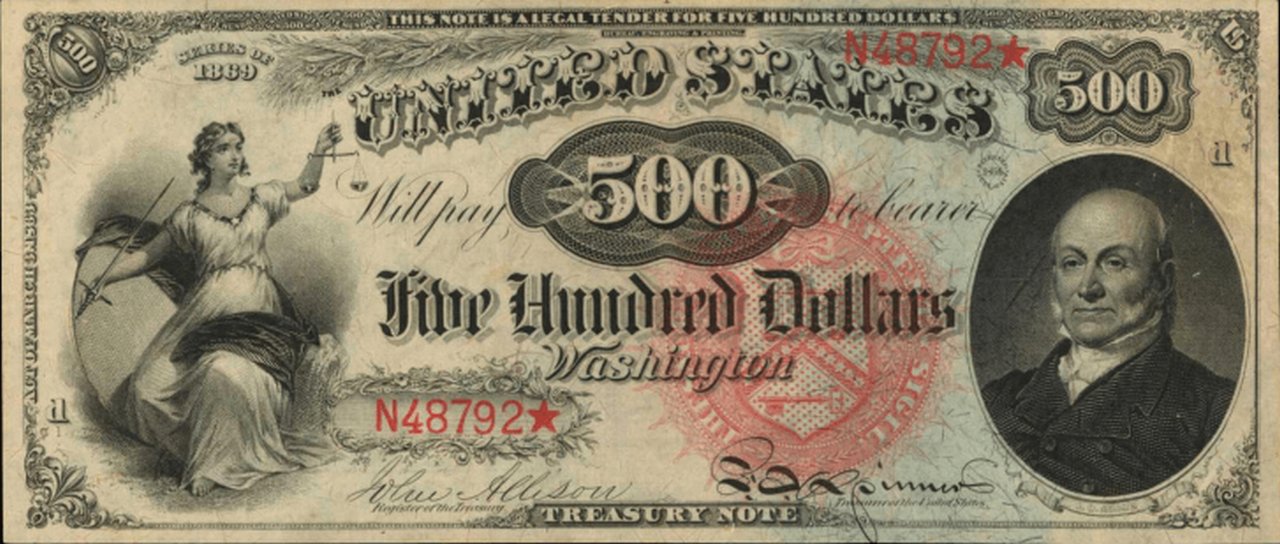Three of the rarest known US paper bills in existence, dating back to the 19th century, are expected to fetch up to $8 million when they are auctioned in Baltimore next week.
The remarkable set includes two $1,000 bills — one from 1869 and another from 1891 — and a $500 note from 1869.
The most valuable of the set, a $1,000 bill from 1891, is one of just two of its kind known to exist, auction house Stack’s Bowers says.
Known as the “Marcy note,” the famous bill features the portrait of William L. Marcy — a former governor of New York and Secretary of State — and has an estimate of between $2 and $3 million.
The auction house describes the piece as “a true American treasure and one of the most exotic notes in all of United States currency” — and the bill has already broken the world record for the highest price ever paid for a piece of paper money when it was sold for $2.6 million in 2013.
A $500 “rainbow” note bearing the portrait of sixth US President John Quincy Adams is also featured in the set, with a hefty estimate of up to $2.5 million.

“Notes from the 1860s have been given the ‘rainbow’ moniker because other notes of the time were relatively monochromatic,” Vicken Yegparian, vice president of Numismatics at Stack’s Bowers Galleries, said.
“On these notes, you have a little bit more color,” Yegparian said. “When they made the paper, they interspersed into the note a series of fibers of blue and other colors, as an anti-counterfeiting measure.”
While 89,360 examples of the bill were printed, today only three are known to still exist, the auction house says, and the bill has an estimated worth of up to $2.5 million.
The same estimate has been handed to a $1,000 note (pictured top) from the same year, which completes the trio of ultra-rare bills.

It features a portrait of DeWitt Clinton, who oversaw construction of the Erie Canal as New York’s sixth governor after unsuccessfully challenging James Madison in the 1812 presidential election.
The Clinton bill was last sold in 1946, the auction house says when it went for $1,200 — equivalent to around $15,500 today.
The three offerings represent “a once-in-a-lifetime opportunity” for buyers, the auction house says.
They belong to Joel R. Anderson, a publisher renowned for his extensive collection of US paper money, who has decided to sell the set. “Part of the magic of collecting is the acquisition of the notes,” Yegparian explained.
“(Anderson) had a goal — he wanted to build the finest collection of US paper currency,” Yegparian added. “Now, he’s decided it’s time to let the next generation of collectors enjoy this collection.”
The bills have been described as “world rarities” by Richard Beale, a valuer at UK auctioneers Warwick & Warwick, who specialize in currency.
“$1000 was a huge amount of money at the time and they only made relatively few,” Beale said, adding that the market in coins and banknotes is “buoyant.”
“Something like this would probably come onto the market once in a generation,” Beale said.
Internet bidding is already open for the set, with the live auction taking place on 28 February.
 Alghadeer TV Alghadeer TV
Alghadeer TV Alghadeer TV
